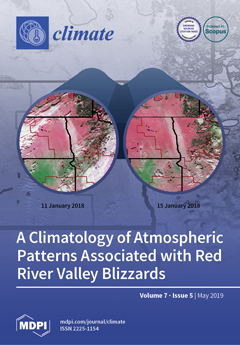A recent article reviewed data on Great Salt Lake (Utah) and concluded falsely that climate changes, especially local warming and extreme precipitation events, are primarily responsible for lake elevation changes. Indeed climatically influenced variation of net inflows contribute to huge swings in the
[...] Read more.
A recent article reviewed data on Great Salt Lake (Utah) and concluded falsely that climate changes, especially local warming and extreme precipitation events, are primarily responsible for lake elevation changes. Indeed climatically influenced variation of net inflows contribute to huge swings in the elevation of Great Salt Lake (GSL) and other endorheic lakes. Although droughts and wet cycles have caused lake elevation changes of over 4.5 m, they have not caused a significant long-term change in the GSL stage. This recent article also suggests that a 1.4 °C rise in air temperature and concomitant increase in the lake’s evaporative loss is an important reason for the lake’s decline. However, we calculate that a 1.4 °C rise may have caused only a 0.1 m decrease in lake level. However, since 1847, the lake has declined 3.6 m and the lake area has decreased by ≈50%, despite no significant change in precipitation (
p = 0.52) and a slight increase, albeit insignificant, in river flows above irrigation diversions (
p = 0.085). In contrast, persistent water extraction for agriculture and other uses beginning in 1847 now decrease water flows below diversions by 39%. Estimates of consumptive water use primarily for irrigated agriculture in the GSL watershed suggest that approximately 85% (2500 km
2) of the reduced lake area can be attributed to human water consumption. The recent article’s failure to calculate a water budget for the lake that included extensive water withdrawals misled the author to focus instead on climate change as a causal factor for the decline. Stable stream flows in GSL’s headwaters, inadequate temperature increase to explain the extent of its observed desiccation, stable long-term precipitation, and the magnitude of increased water consumption from GSL together demonstrate conclusively that climatic factors are secondary to human alterations to GSL and its watershed. Climatization, in which primarily non-climatic processes are falsely attributed to climatic factors, is a threat to the credibility of hydrological science. Despite a recent suggestion to the contrary, pressure to support Earth’s rising human population—in the form of increasing consumption of water in water-limited regions, primarily to support irrigated agriculture—remains the leading driver of desiccation of inland waters within Earth’s water-limited regions.
Full article





